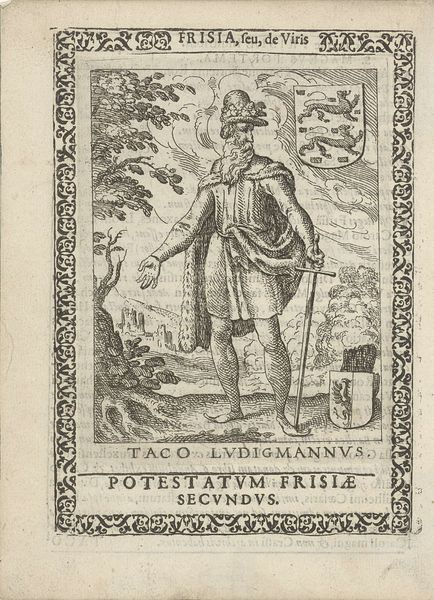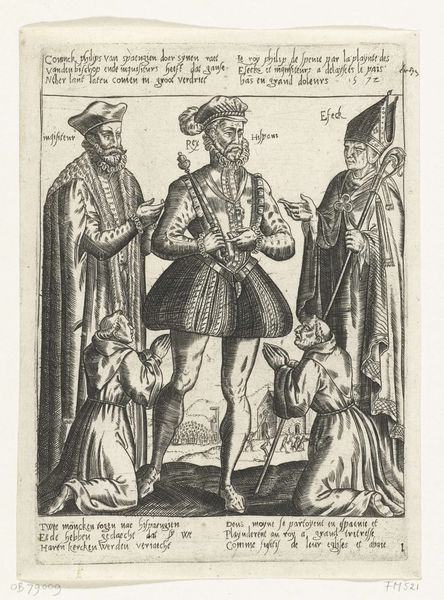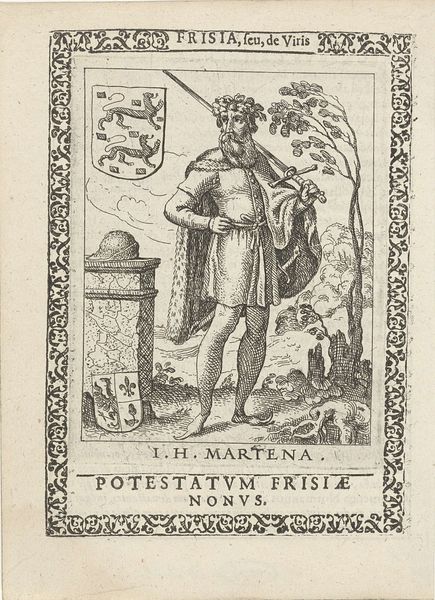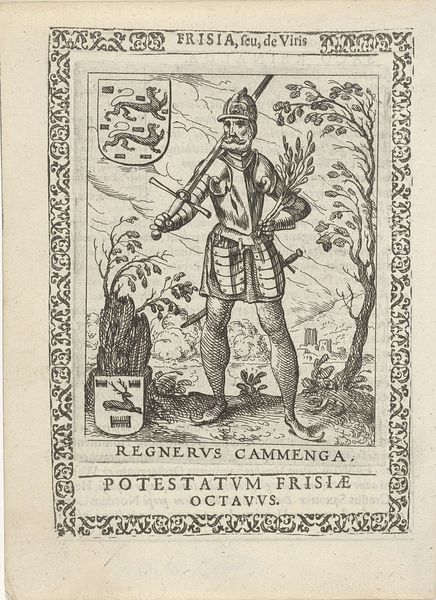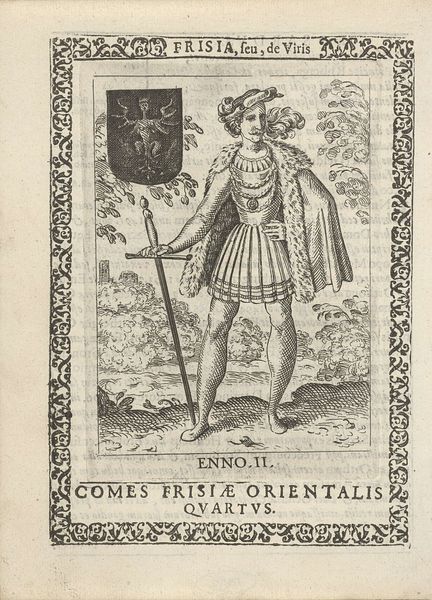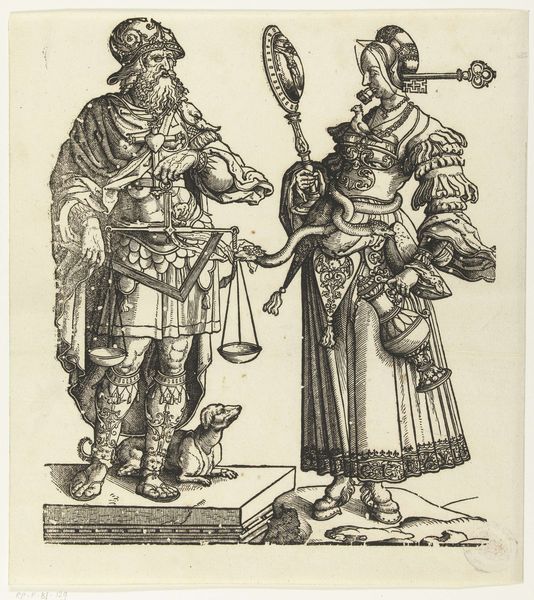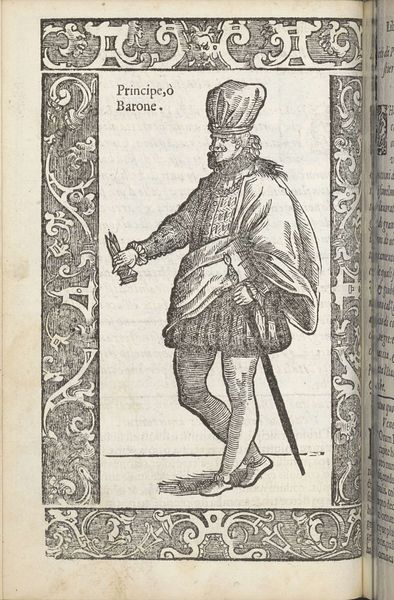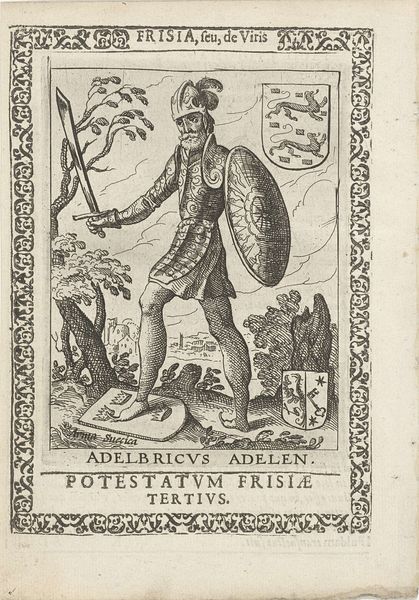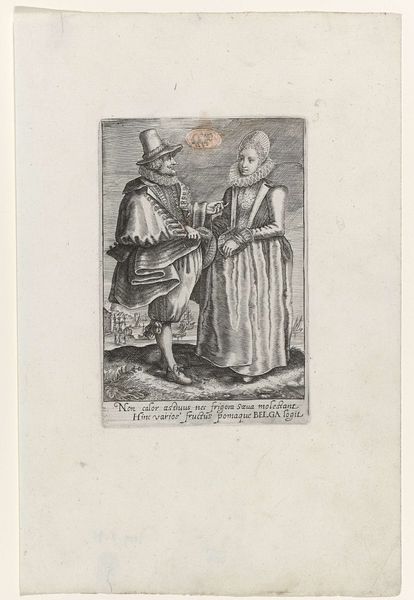
Gosso Ludigman, zesde potestaat van Friesland 1618 - 1620
0:00
0:00
print, textile, engraving
#
portrait
# print
#
textile
#
mannerism
#
history-painting
#
engraving
Dimensions: height 125 mm, width 100 mm, height 158 mm, width 115 mm
Copyright: Rijks Museum: Open Domain
Pieter Feddes van Harlingen made this print of Gosso Ludigman, sixth potestaat of Friesland. It's an engraving, which means the artist would have used a tool called a burin to carve lines into a metal plate. Ink is then applied to the plate, and the raised areas wipe clean. When paper is pressed against the plate, the ink in the grooves is transferred, leaving a precise, linear image. The material of the print, paper, makes it relatively inexpensive and infinitely reproducible, thus democratic. Its texture is smooth, its weight minimal. The act of engraving, requiring skill, precision, and focused labor, imbues the image with an authority that aligns well with the portrait's subject. The sharp lines and contrast enhance the solemnity of the person depicted. Prints like this one were critical in disseminating images and ideas in early modern Europe. They helped to visualize power, standardize appearance, and circulate political messages. The very process of engraving, rooted in craft traditions but leveraged for mass communication, speaks to the transformative social forces at play during this time.
Comments
No comments
Be the first to comment and join the conversation on the ultimate creative platform.


